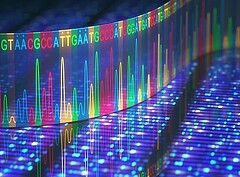Microbiome Research- Opportunities and Limits [24.04.19]
The microbiome plays a decisive role in our health. Animal and plant health also has been associated with their corresponding microbiome. The fields of application of this young field of research are manifold and there is great hope for future opportunities. However, microbiome research currently has to overcome some methodological challenges in order to process correlative findings into concrete mechanisms of action. An overview of technological possibilities and methodological limitations in microbiome research is provided by Prof. Fricke's Hohenheim research group.
Original Paper
Fricker, Alena M.; Podlesny, Daniel; Fricke, W. Florian (2019): What is new and relevant for sequencing-based microbiome research? A mini-review. In: Journal of Advanced Research. DOI: 10.1016/j.jare.2019.03.006.
Abstract
Microbiome research has transformed the scientific landscape, as reflected by the exponential increase in microbiome-related publications from many different disciplines. Host-associated microbial communities play a role for almost all aspects of human, animal and plant biology and health. Consequently, there are tremendous expectations for the development of new clinical, agricultural and biotechnological applications of microbiome research. However, the field continues to be largely shaped by descriptive studies, the mechanistic understanding of microbiome functions for their hosts remains fragmentary, and direct applications of microbiome research are lacking. The aim of this review is therefore to provide a general introduction to the technical opportunities and challenges of microbiome research, as well as to make experimental and bioinformatic recommendations, i.e. (i) to avoid, reduce and assess the confounding effects of sample storage, nucleic acid isolation and microbial contamination; (ii) to minimize non-microbial contributions in host-associated microbiome samples; (iii) to sharpen the focus on physiologically relevant microbiome features by distinguishing signals from metabolically active and inactive or dead microbes and by adopting quantitative methods; and (iv) to enforce open data and protocol policies in order increase the transparency, reproducibility and credibility of the field.


